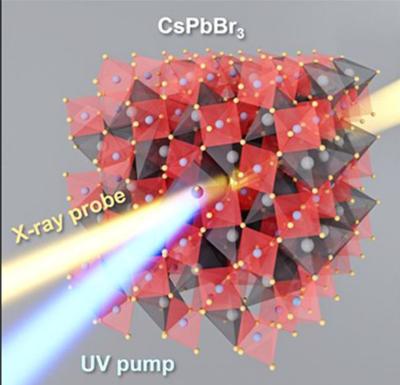Understanding the charge mobility of lead-halide perovskite materials is crucial for their use in photovoltaic applications. Using X-ray spectroscopic techniques, the structural deformations affecting the charge mobility, which plays a central role in solar energy conversion, have been identified and quantified by an international team of scientists led by Giulia Mancini (at the University of Pavia) and M. Chergui at EPFL.

Lead-halide perovskites' use in photovoltaic applications relies on the generation of charges (electrons and hole) upon absorption of light. These charges migrate through the material to generate an electrical current. One of the crucial physical properties in this respect is the so-called charge mobility. Despite their remarkable performances in light-to-electricity conversion, a limitation of perovskites is their charge mobilities, which are orders of magnitude smaller than those of conventional semi-conductors used in photovoltaics.
In their recent study, the international team of scientists used X-ray absorption spectroscopy to address this issue. The team included the Advanced Photon Sources at Argonne National Labs (USA) and the Paul-Scherrer-Institut (PSI, Villigen) where the experiments were conducted, as well as the group of Maksym Kovalenko at ETH-Zürich, which provided the samples.
The researchers monitored with element-selectivity the photoinduced deformation around the lead (Pb) and bromine (Br) atoms in the inorganic CsPbBr3 perovskite. Using cutting-edge computational simulations, carried out by Nicola Colonna at PSI and EPFL, they could identify the structural deformations caused by the polarons formed around Br atoms. They also showed that the photoinduced thermal effects are negligible in determining the structural changes, which are predominantly due to the polarons. These results clarify the origin of the low charge mobilities and provide a basis for strategies to improve it.
'The insight gained on inorganic lead-halide perovskites are of general validity and should be applicable to the even more popular inorganic-organic perovskites,' says Giulia Mancini. 'Our work also shows the importance of combining different approaches (X-ray and optical spectroscopy, X-ray diffraction) in order to nail down the details of photoinduced processes in these materials.'